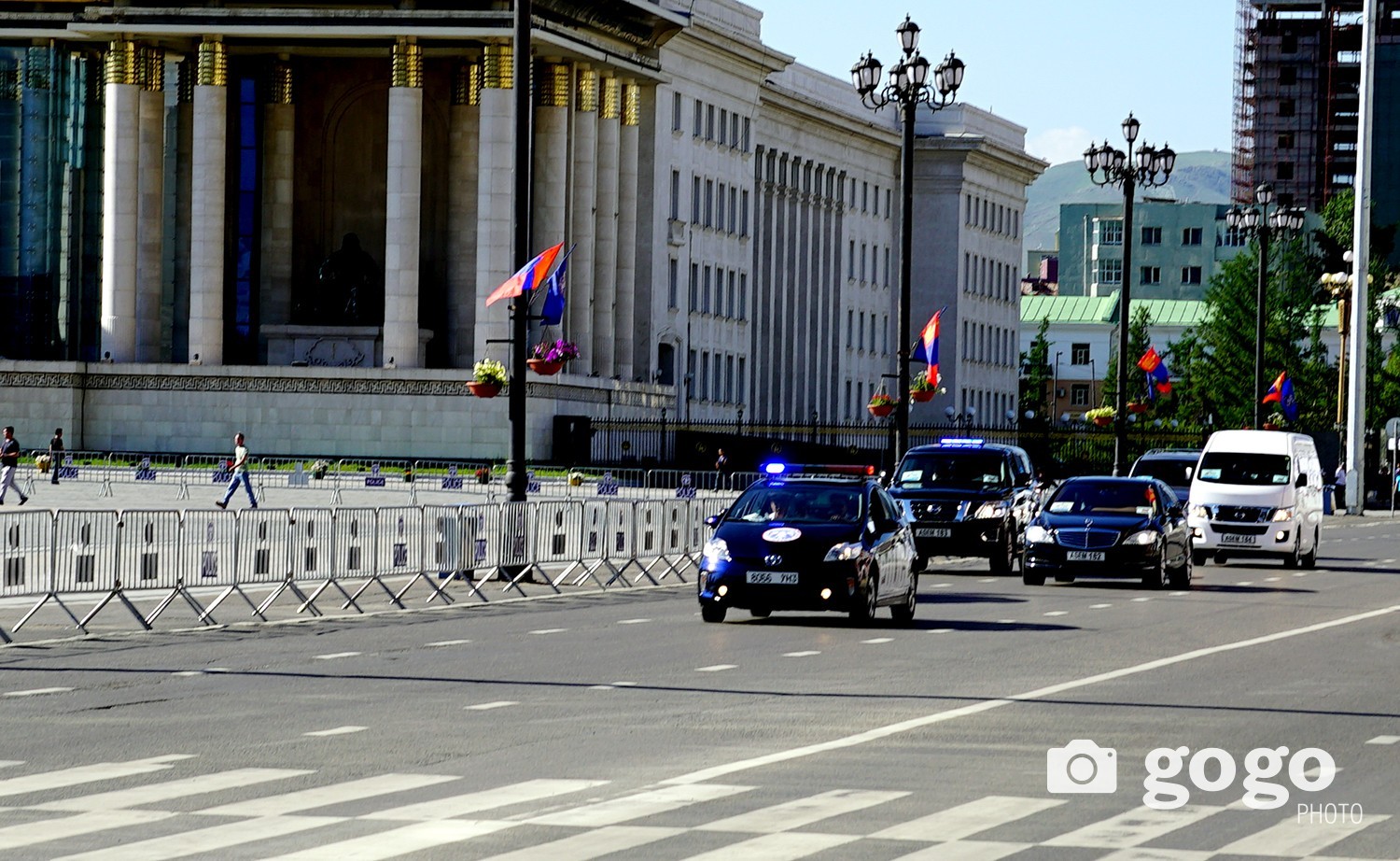Jack Weatherford, a professor of anthropology at Macalester College in Minnesota, wrote in his 2004 book “Genghis Khan and the Making of the Modern World” that Mongolians established the first-ever bridge connecting the civilizations in Asia and Europe in the 13th century. He went on to write that 200 years later, Europeans attempted to revive the highly profitable foreign trade that was set up by Chinggis Khaan’s descendants.
The book explains that Chinggis Khaan managed to establish a brand new set of rules between the people of different countries and ensured their effective implementation. The main clauses in these rules related to religious tolerance, intolerance of discrimination, respecting local traditions and cultures, encouraging talents and skills, abiding by the rule of law, developing international trade, building commercial roads, spreading literacy, establishing the first postal network, introducing the wide use of printed currency, banning torture for punishment, and ensuring the security of diplomatic envoys.
Almost 800 years later, the representatives of almost 50 nations in Asia and Europe met in
Ulaanbaatar, the capital of Mongolia, and discussed bringing back those rules introduced by Chinggis Khaan. It felt like the envoys from these countries gathered together in a Mongolian ger and talked the matter through. If those principles of Chinggis Khaan had been followed throughout the world, there would not have been any conflicts and wars. The truck attack in Nice, France, where a Tunisian-born individual took the lives of dozens of people, would not have happened. Even the failed coup in Turkey, aimed at overturning the democratically elected government by force, could not have taken place.
WHAT HAPPENED AT ASEM IN ULAANBAATAR?
The 11th Asia-Europe Meeting (ASEM11) Summit was successfully held in Ulaanbaatar on
July 15-16. The summit was attended by 10 heads of state, 23 heads of government, 17 foreign ministers and special delegates, and over 4,000 representatives and guests. The 11th ASEM meeting, which was organized under the theme “Partnership for the Future through Connectivity”, marked the 20th anniversary of the Asia-Europe Meeting. More than 700 journalists from domestic and foreign press reported on the event. It was in 2008 that Mongolia joined this platform connecting the two continents, where 63 percent of the world’s population resides, 50 percent of global GDP is produced, and 60 percent of global trade ownership is held.
Prior to the summit, approximately 10 ASEM meetings (each of which covered different areas) were held in Ulaanbaatar. These meetings were attended by representatives from the government, private sector, and civil society of 51 member countries. The discussion points involved migration, environmental protection, food security, renewable energy, civil society, youth and lawmakers, trade, and investment. As an outcome of all these meetings aimed at resolving challenges Asia and Europe face, the Ulaanbaatar Declaration was adopted.
ASEM’S SIGNIFICANCE TO MONGOLIA
The ASEM Summit has great significance to Mongolia politically. This was an important occasion, as there are more political and economic centers around the world, and especially when Sino-Russian relations are getting closer at pace. It was important that government, the private sector, civil society, and business representatives from Asian and European nations came together and had extensive discussions. It also has historical significance, as the summit was held in Mongolia, which is the only country that connects Asia and Europe, and Russia and China.

Although the summit – at times – seemed to be almost too big and overwhelming for a country like us, who has less political weight, we had nice, unique days where Mongolia showed its neutral status, promoted our nation, culture and history, and proved that we are a peaceful country where these types of meetings can be held.
It was a big step towards developing tourism, in particular “convention tourism”, which could be a very promising area of growth for Mongolia. Convention tourism includes events and meetings related to fields such as sports, arts, and business.
These events are usually held in countries that have good communications, hotels, and transportation infrastructure, and where the security is ensured, catering and entertainment services are good, and people are friendly. Convention tourism is a relatively profitable business.
As long as planning and preparation are carried out well, Mongolians proved that we can receive 5,000 people a day. In the framework of organizing the summit, many projects took place, including setting up a villa designated for receiving high-profile visitors, building up capacity at hotels, and preparing skilled staff and volunteers. A total of 4,400 people were given technical training, 620 received training in Mongolia, 15 learned more about hotel management in South Korea, and 50 were sent to other countries for capacity building.
With funding from the European Union, 20 people were given professional training (14 received their training in India) as interpreters for international conferences, while over 1,100 people – including students – were trained for translation. Approximately 500 people from the police and the intelligence agency were given special training on security matters.
It has been estimated that we generated revenue of eight to 10 million USD from flights, hotels, goods, and services for ASEM guests. In 2016, 21 billion MNT was spent from the public budget for organizing the summit. The costs were for venues, transportation services, renovation projects, infrastructure, and security equipment.
However, if you take into account the inkind contributions and donations from the private sector, and soft loans provided to hotels and service providers, there has been a total expenditure of hundreds of millions of MNT. The government should compile these numbers and publicly disclose them in a report.
LESSONS LEARNED
International events of this scale – especially when foreign heads of state are attending – should not be held in close proximity to or at the same time as elections. This time, the newly appointed Prime Minister had dozens of meetings and signed many documents with cabinet ministers who were shortly to be replaced.
Furthermore, this type of event should be organized not in summer months, but at some time after mid-September. It helps ordinary tourists to have greater freedom in booking flights and finding accommodations, which will help us to extend our tourism season, increase the number of tourists we receive, and generate more revenue.
Also, it should be considered to have high-level delegations from 2-3 countries attend the National Naadam Festival and open up opportunities for informal talks. In general, more focus should be directed at public diplomacy. Also, the opportunity for the media to meet with delegations from other countries was limited during the ASEM Summit.
It was also demonstrated that if Mongolians try, we can receive visitors in a great environment, where the city is clean and well-organized. The streets had no rubbish lying on the ground, while taxis were clean and the drivers were wearing white gloves. This is something that we should keep on doing.
Also, if required, translations for taxi drivers can be done through internal radio communications.

Street names, traffic signs, bus stops, and building addresses need to be both in Mongolian and English. If the people and the senior leaders of the government are bilingual, it would make human interactions much more interesting and effective.
May the people of Asia and Europe be good friends, and the connection be much stronger. May more of our friends travel on this bridge Mongolia has revived.
Jack Weatherford, a professor of anthropology at Macalester College in Minnesota, wrote in his 2004 book “Genghis Khan and the Making of the Modern World” that Mongolians established the first-ever bridge connecting the civilizations in Asia and Europe in the 13th century. He went on to write that 200 years later, Europeans attempted to revive the highly profitable foreign trade that was set up by Chinggis Khaan’s descendants.
The book explains that Chinggis Khaan managed to establish a brand new set of rules between the people of different countries and ensured their effective implementation. The main clauses in these rules related to religious tolerance, intolerance of discrimination, respecting local traditions and cultures, encouraging talents and skills, abiding by the rule of law, developing international trade, building commercial roads, spreading literacy, establishing the first postal network, introducing the wide use of printed currency, banning torture for punishment, and ensuring the security of diplomatic envoys.
Almost 800 years later, the representatives of almost 50 nations in Asia and Europe met in
Ulaanbaatar, the capital of Mongolia, and discussed bringing back those rules introduced by Chinggis Khaan. It felt like the envoys from these countries gathered together in a Mongolian ger and talked the matter through. If those principles of Chinggis Khaan had been followed throughout the world, there would not have been any conflicts and wars. The truck attack in Nice, France, where a Tunisian-born individual took the lives of dozens of people, would not have happened. Even the failed coup in Turkey, aimed at overturning the democratically elected government by force, could not have taken place.
WHAT HAPPENED AT ASEM IN ULAANBAATAR?
The 11th Asia-Europe Meeting (ASEM11) Summit was successfully held in Ulaanbaatar on
July 15-16. The summit was attended by 10 heads of state, 23 heads of government, 17 foreign ministers and special delegates, and over 4,000 representatives and guests. The 11th ASEM meeting, which was organized under the theme “Partnership for the Future through Connectivity”, marked the 20th anniversary of the Asia-Europe Meeting. More than 700 journalists from domestic and foreign press reported on the event. It was in 2008 that Mongolia joined this platform connecting the two continents, where 63 percent of the world’s population resides, 50 percent of global GDP is produced, and 60 percent of global trade ownership is held.
Prior to the summit, approximately 10 ASEM meetings (each of which covered different areas) were held in Ulaanbaatar. These meetings were attended by representatives from the government, private sector, and civil society of 51 member countries. The discussion points involved migration, environmental protection, food security, renewable energy, civil society, youth and lawmakers, trade, and investment. As an outcome of all these meetings aimed at resolving challenges Asia and Europe face, the Ulaanbaatar Declaration was adopted.
ASEM’S SIGNIFICANCE TO MONGOLIA
The ASEM Summit has great significance to Mongolia politically. This was an important occasion, as there are more political and economic centers around the world, and especially when Sino-Russian relations are getting closer at pace. It was important that government, the private sector, civil society, and business representatives from Asian and European nations came together and had extensive discussions. It also has historical significance, as the summit was held in Mongolia, which is the only country that connects Asia and Europe, and Russia and China.

Although the summit – at times – seemed to be almost too big and overwhelming for a country like us, who has less political weight, we had nice, unique days where Mongolia showed its neutral status, promoted our nation, culture and history, and proved that we are a peaceful country where these types of meetings can be held.
It was a big step towards developing tourism, in particular “convention tourism”, which could be a very promising area of growth for Mongolia. Convention tourism includes events and meetings related to fields such as sports, arts, and business.
These events are usually held in countries that have good communications, hotels, and transportation infrastructure, and where the security is ensured, catering and entertainment services are good, and people are friendly. Convention tourism is a relatively profitable business.
As long as planning and preparation are carried out well, Mongolians proved that we can receive 5,000 people a day. In the framework of organizing the summit, many projects took place, including setting up a villa designated for receiving high-profile visitors, building up capacity at hotels, and preparing skilled staff and volunteers. A total of 4,400 people were given technical training, 620 received training in Mongolia, 15 learned more about hotel management in South Korea, and 50 were sent to other countries for capacity building.
With funding from the European Union, 20 people were given professional training (14 received their training in India) as interpreters for international conferences, while over 1,100 people – including students – were trained for translation. Approximately 500 people from the police and the intelligence agency were given special training on security matters.
It has been estimated that we generated revenue of eight to 10 million USD from flights, hotels, goods, and services for ASEM guests. In 2016, 21 billion MNT was spent from the public budget for organizing the summit. The costs were for venues, transportation services, renovation projects, infrastructure, and security equipment.
However, if you take into account the inkind contributions and donations from the private sector, and soft loans provided to hotels and service providers, there has been a total expenditure of hundreds of millions of MNT. The government should compile these numbers and publicly disclose them in a report.
LESSONS LEARNED
International events of this scale – especially when foreign heads of state are attending – should not be held in close proximity to or at the same time as elections. This time, the newly appointed Prime Minister had dozens of meetings and signed many documents with cabinet ministers who were shortly to be replaced.
Furthermore, this type of event should be organized not in summer months, but at some time after mid-September. It helps ordinary tourists to have greater freedom in booking flights and finding accommodations, which will help us to extend our tourism season, increase the number of tourists we receive, and generate more revenue.
Also, it should be considered to have high-level delegations from 2-3 countries attend the National Naadam Festival and open up opportunities for informal talks. In general, more focus should be directed at public diplomacy. Also, the opportunity for the media to meet with delegations from other countries was limited during the ASEM Summit.
It was also demonstrated that if Mongolians try, we can receive visitors in a great environment, where the city is clean and well-organized. The streets had no rubbish lying on the ground, while taxis were clean and the drivers were wearing white gloves. This is something that we should keep on doing.
Also, if required, translations for taxi drivers can be done through internal radio communications.

Street names, traffic signs, bus stops, and building addresses need to be both in Mongolian and English. If the people and the senior leaders of the government are bilingual, it would make human interactions much more interesting and effective.
May the people of Asia and Europe be good friends, and the connection be much stronger. May more of our friends travel on this bridge Mongolia has revived.



